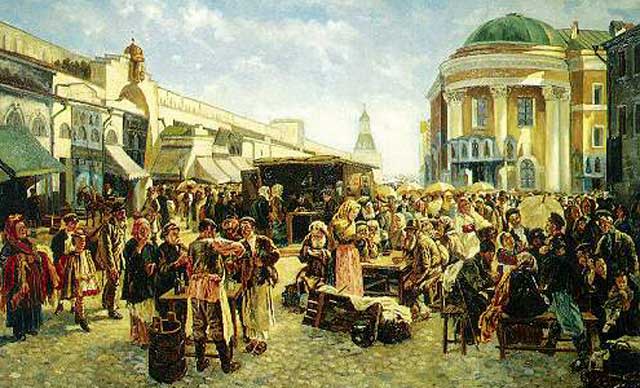My First Question For You
Before you continue reading this, I have a question for you. Do you really love them? Do you really like them? Did you notice that I needn’t mention a name and yet you still thought of their name? You’ll most likely relate to the nameless boy in “Araby.”
Brief Summary
The story starts off with the setting of North Richmond Street, but the narrator describes the street is blind, personifying the streets with a feeling of decent lives. And there is this image presented of children playing in shadows. This sets up the story of a boy’s quest for true love.
Araby is essentially a story of a boy who is guided by what he believes is “love.” He develops this crush with Mangan’s sister (we are never given her actual name). He becomes so infatuated with her and all that she can offer him.
He is very tactical in his obsession, so much that he would calculate his moves. I mean, take a look at this…
“When she came out to the doorstep my heart leaped. I ran to the hall, seized my books and followed her. I kept her brown figure always in my eye and, when we came near the point at which our ways diverged, I quickened my pace and passed her” (Joyce).
Perhaps crush doesn’t really cover what this girl is to this boy. He’s absolutely smitten! This boy’s mind is always filled with thoughts about her- how she looks, the way she moves, with so little thoughts for the future. It didn’t matter where he was, he was always thinking about her. But, here’s the twist to the heart: he never even spoke one word to her before. Crazy right?
But one day, the cards played in his favor. She finally talked to him, convincing him to go to Araby, a “splendid bazaar,” to buy her a gift.
Once the boy arrived to the bazaar after some difficulties, Araby was already shutting down and he wasn’t able to buy anything. At the end, the boy is crushed by anger, anguish, and derided by vanity. Lovely, right?

Brief Background
“Araby” is the third story of a collection of stories entitled The Dubliners by James Joyce. He was a well respected author who experimented with different uses of language and his style of writing was unique to him. He is known for his use of epiphany, which is prominent in Araby. The story of Araby is heavily based on Joyce’s history in Dublin, Ireland. Unfortunately, I could not find more about the historical background of “Araby,” due to websites requiring me to spend money to view more. But, I can tell you this: “Araby” is based in the early 20th century, when Irish Catholicism thrived.
Blindness
There is a continuous theme of blindness in the story. Remember when I mentioned the first setting of the story- North Richmond Street? Remember how it was described as being blind? In addition, this street had a blind end, which means that this street has a dead end, implying that the boy has only stayed on this street. He knows not of what consists of the outside world. When he watches her from the window, he watches her with the blind pulled down so that she would not see him watching her.
While there is physical blindness, there is also a figurative blindness. First off, the main characters of the book don’t even have names. They’re literally living in a world of namelessness! The lack of identity that Joyce provides allows readers to really focus in on the plot line. The boy was blinded by what he believes is love. This blindness permitted the boy to only think about the girl. And due to the blindness, he sacrifices his time for her to go to the bazaar to buy her a gift. But on the journey there, the blindness starts to fade away. Instead of this “splendid bazaar” that was expected, what greets the the boy is a dark and empty bazaar. He has failed to buy the girl a gift and through this, he realizes how blind he was with “love.”
“Gazing up into the darkness I saw myself as a creature driven and derided by vanity; and my eyes burned with anguish and anger” (Joyce).
The blindness draws a juxtaposition between the fantasies of love and the harsh reality of the boy’s romantic life. “This jarring juxtaposition produces irony because it heightens the absurd fictitiousness of the boy’s feelings, preventing us from identifying with his outpourings of emotion” (Smith, Karen).
Access the critique here! —> Araby Critique

The Thin Line Between Fiction and Reality
We can all relate to the feelings of having a crush- a person who we can stop thinking about. We fall in love with the idea of them and what they could be to us. But that’s just it. We fall in love with the idea of them, not them.
Last Question
Let me ask you again: Do you really love them? Do you really like them? Or are you like the nameless boy- derided by vanity? Maybe reading “Araby” will help you reach a conclusion.
Read Araby here
Listen to audio:
Works Cited:
ApRoberts, Robert P. “‘Araby’ and the Palimpsest of Criticism or, through a Glass Eye Darkly.” The Antioch Review, vol. 26, no. 4, 1966, pp. 469–489. JSTOR, www.jstor.org/stable/4610803.
Wesley. “Araby.” Owl Eyes, www.owleyes.org/text/araby/analysis/historical-context.
Smith, Karen R. “Ethnic Irony and the Quest of Reading: Joyce, Erdrich, and Chivalry in the Introductory Literature Classroom.” The Journal of the Midwest Modern Language Association, vol. 35, no. 1, 2002, pp. 68–83. JSTOR, www.jstor.org/stable/1315319.